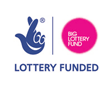Reading for Reading
Central to the learning of reading is a secure understanding of phonics. As a result we introduce children to sounds and letter combinations as soon as possible through daily ‘Reading for Reading’ (previously ERR) sessions, which begin in Nursery and continue through the school.
In Key Stage 1, children receive two sessions of Reading for Reading daily. The first session, is dedicated to applying these skills to reading a book as a whole class, developing children’s decoding skills. The second session, Reading for Meaning, focuses on developing the children’s comprehension skills. Both sessions are 15 minutes long and begin by teaching the children the sounds and letter combinations which they need to decode phonically regular words. Children spend 2 minutes synthesising (blending the sounds together to form words), 2 minutes segmenting (splitting words into their sounds) 2 minutes reading of high frequency, 2 minutes learning new vocabulary by adding actions to the words and 2 minutes looking at nonsense words (made up words that contain current and previous letter sounds and combinations). 4 minutes is then spent on a ‘practise and apply section’ where the children do a short activity to allow them to practise and apply their new letter sound or combination. This could involve sentence writing, sorting real and nonsense words or spotting words that contain their current letter sound or combination. After that, 7 minutes is spent on Reading for Reading or Reading for Meaning.
Click here to view Nursery Reading for Reading resources
Click here to view Reception Reading for Reading resources
Click here to view Year 1 Reading for Reading resources
Click here to view Year 2 Reading for Reading resources
Additional pages within the Home-School Partnership Book provide support for parents and carers, so that you can practise these sounds and the 100 high frequency words with your children.
A greater emphasis is placed on developing children’s comprehension skills as they become more confident in their phonological knowledge. In Key Stage 2, children receive one session of Reading for Reading daily, and one independent reading session. In the place of letter combinations the children spend 3 minutes learning and rehearsing prefixes and suffixes and age appropriate common exception words. They then spend 3 minutes learning new vocabulary words with actions and finally spend 10 minutes develop their comprehension skills through Reading for Meaning.
Letter sounds and combinations
These are the letter combinations which children will be learning in school. You can help your child learn these by reading them at home and finding them in the words of the books that they bring home.
|
a-e |
i-e |
o-e |
u-e |
ck |
soft c |
th |
|
ing |
er |
sh |
wh |
qu |
ow (cow) |
ow (blow) |
|
ar |
ea |
oo |
ee |
ai |
ch |
or |
|
ay |
igh |
ur |
oa |
au |
ou |
aw |
|
ir |
kn |
oi |
ph |
ey |
ew |
air |
|
ear (hear) |
oor |
ue |
oo |
nk |
tch |
ear |
Key Words
These are words that cannot be sounded out or words that come up often in books. The first 16 words are below. You can help your child learn these by reading them at home and finding them in the books that they bring home.
|
a |
in |
of |
to |
|
and |
is |
that |
was |
|
he |
it |
the |
went |
|
I |
my |
then |
with |
Once children are confident reading these words children are introduced to the ‘next 24’ words.
|
am |
had |
me |
some |
|
are |
has |
one |
there |
|
at |
have |
out |
they |
|
come |
her |
saw |
this |
|
for |
his |
see |
we |
|
go |
little |
she |
when |
The last key words we teach the children are the ‘last 60 words’.
|
about |
could |
make |
take |
|
after |
did |
new |
their |
|
all |
do |
next |
them |
|
an |
down |
not |
three |
|
as |
from |
now |
time |
|
away |
off |
get |
today |
|
back |
got |
old |
too |
|
be |
here |
on |
two |
|
because |
him |
once |
up |
|
big |
into |
other |
us |
|
but |
last |
our |
very |
|
by |
like |
over |
were |
|
call |
live |
put |
what |
|
come |
look |
said |
will |
|
can |
made |
so |
you |
Useful websites/resources:
- Making sounds in to words (Oxford Owl)
- How to blend sounds (YouTube video)
- Pronouncing pure sounds (YouTube video)
- Combination articulation (YouTube video)















